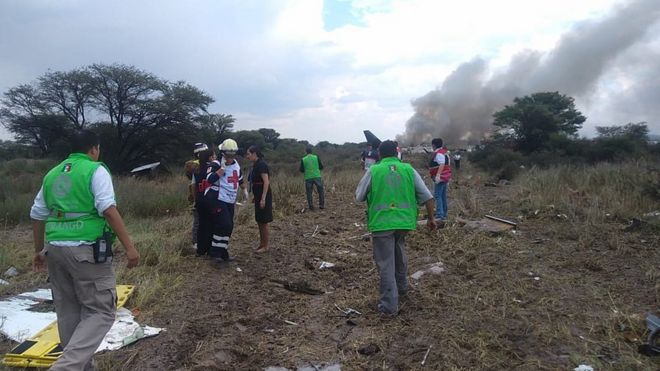
Surviving A Plane Crash
Almost all those on board were injured in the accident,
but most reportedly walked away from the wreckage with only light injuries.
How unusual is this? Well, surprisingly, it may not be as rare
as you'd think.
What
are our odds of surviving an accident?
Put simply, there is no clear-cut answer - just as we can't
definitively say how survivable car accidents are, because it depends entirely
on the circumstances.
But when the US National Transportation Safety Board did a review of
national aviation accidents from 1983-1999, it found that more
than 95% of aircraft occupants survived accidents, including 55% in the most
serious incidents.
Our
chances largely depend on factors like the presence of fire, the altitude a
mishap takes place at, and its location.
The European Transport Safety Council estimated that 90% of
aircraft accidents were technically survivable in a study
in 1996.
In
the two decades since these two studies were done, airline safety has
improved even further, with fatal accidents steadily declining.
Flying is statistically less risky than other modes of
transport, but that doesn't stop some of us worrying.
It could be because we mostly see dramatic and fatal incidents
on the news, or dramatised by Hollywood.
What
determines if a crash is survivable?
Tom Farrier, former director of safety at the Air Transport
Association, explained on the website Quora that three general conditions
help determine whether an accident is survivable:
§ Whether the forces encountered
by human occupants are within the limits of human tolerance
§ Whether the structures
surrounding them (i.e. the plane) remain substantially intact
§ Whether the post-crash
environment presents an immediate threat to occupants or rescuers
In short: how bad any impact was for the body, how much damage
was done to the aircraft, and whether the wreckage and environment around it
are safe.
In the case of Mexico, the plane crashed shortly after take-off
and most of the injured passengers were able to get away before the aircraft
caught fire.
Asked if it was worse to
crash on land or sea, aviation consultant Adrian Gjertsen says it has more to
do with the proximity of rescue services than the surface.
"For
instance, during the incident on the Hudson River, there were rescue services
readily available. But if you're in the middle of an ocean there's going to be
more of a problem because of simply getting back to dry land," he
told the BBC.
"If
there was an accident in the Sahara or the middle of the Atlantic - I wouldn't
say there's an enormous difference between them really, insomuch as there's no
one there to help."
How can we boost our odds?
The internet is full of advice on this topic: wearing your
seatbelt, not wearing flammable clothes, and counting the seat rows in advance
in case the lights fail.
People also debate where in an aircraft it's safest to sit, and some research suggests crash records show the rear could be
marginally safer.
Mr Gjertsen says it is not that simple, and that it all depends
on the aircraft and the individual incident.
"One of the issues that
has caused problems is passengers' desire to collect their baggage and depart
with it," he says.
"That will prejudice
safety - not only of themselves, but everyone else as well.
"It's inevitably human
nature that you want to, but if something does go wrong you need to get away
from the situation."
"All I can really stress
is how safe aviation in general is," Mr Gjertsen says.
"And the idea is to
prevent something that you need to survive from happening in the first
place."




No comments:
Post a Comment